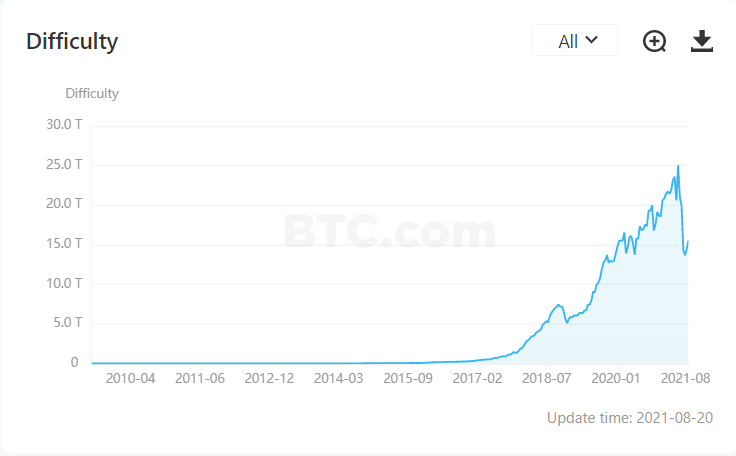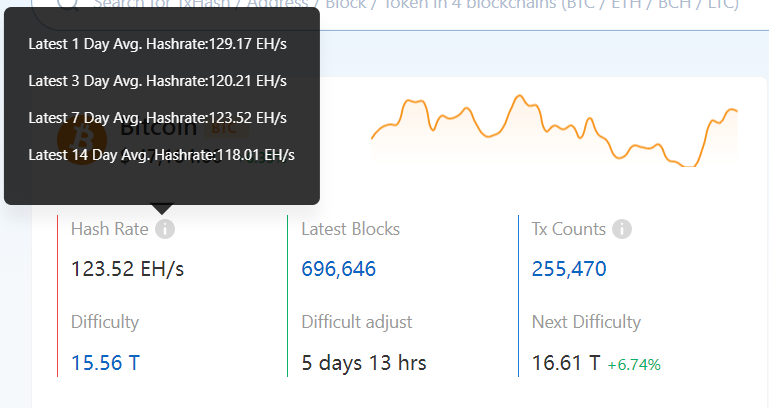Prior to China’s sudden crackdown, China’s mining dominance had already begun to slip and many miners have settled on Texas as their destination because Mining cryptocurrency requires lots of cheap energy.In the middle of rural Texas, a cryptocurrency mine is...

Prior to China’s sudden crackdown, China’s mining dominance had already begun to slip and many miners have settled on Texas as their destination because Mining cryptocurrency requires lots of cheap energy.
In the middle of rural Texas, a cryptocurrency mine is currently under construction. Hundreds of machines more powerful than the average computer will soon be housed in this 320-acre mining facility in Dickens county, where they will work day and night to solve a complex series of algorithms. If successful, the reward will be newly minted bitcoin, currently worth about $47,000 each. All the machines need to thrive are spaces to sit and electricity?—?lots of it.
To be profitable, mining cryptocurrency requires lots of cheap energy. China was once the main hub for mining, with over half of the world’s mining taking place in the country, precisely because its electricity is cheap. But earlier this summer, local governments in China began to shut down bitcoin mines as the country works to develop its own, better-controlled digital currency. The bitcoin hashrate?—?the processing power used to produce bitcoin?—?was halved after the crackdown.
Miners have since been scouring the globe for places where electricity is cheap, and many have settled on Texas as their destination. Texas’s power grid is deregulated, which means customers can choose between different power providers and providers are thus incentivized to provide low rates. Mining facilities can set up long-term contracts with power providers that allow them to purchase electricity at a fixed price for many years, says Jason Les, CEO of Riot Blockchain, a US-based cryptocurrency mining company.
Riot Blockchain recently acquired Whinstone US, the largest bitcoin mining facility in the US-based in Rockdale, Texas, for $80m. Whinstone says its facility can produce 500 bitcoin per month?—?worth a total of $22m at bitcoin’s current value. When demand for electricity goes up, particularly in the summer months, Texas power companies will actually pay mining facilities to lower their energy usage. “If you were a miner that has a long-term power purchase agreement, then you own power at a fixed price … you’re committing to buying energy for years no matter what,” Les said. “As a bitcoin miner, you essentially own that power, and that allows you to work as a virtual power plant. You can take the power that you agreed to buy at a fixed lower price, and then you can sell that back to the grid.”In recent months, Texas leaders have been vocal about their support of cryptocurrency mining coming to their state.
“For the last 18 months, we’ve had a serious growth of mining infrastructure in the U.S.,” said Darin Feinstein, founder of Blockcap and Core Scientific. “We’ve noticed a massive uptick in mining operations looking to relocate to North America, mostly in the U.S.” the mass mining exodus out of China, which led to half the world’s miners dropping offline. But there were 500,000 formerly Chinese miner rigs found homes in the U.S, it is observed that the difficulty has been recovering with the total hashrate increasing to about 130 EH/s.
 The difficulty started to raise up again from BTC.com
The difficulty started to raise up again from BTC.com Total hashrate equal to 129.17 on 8/20/2021 from BTC.com
Total hashrate equal to 129.17 on 8/20/2021 from BTC.comAlong with the Argo and Whinstone facilities, BIT Mining, a Chinese mining company, has invested $25m to build a mine in Texas.
An influx of interest from cryptocurrency businesses does not come without risk, though. Bitmain, a China-based company, said in 2018 that it would invest $500m to build a huge mining facility in Rockdale, bringing jobs to a community that has seen huge job losses after a coal plant closure in 2008. But after the price of bitcoin dropped to just over $3,000 in the fall, the company pulled out of the project.
Texas is home to some of the cheapest sources of energy on the planet, many of which tend to be renewable. Because miners at scale compete in a low-margin industry, where their only variable cost is typically energy, they are incentivized to migrate to the world’s cheapest sources of power.
How Texas became the world’s new bitcoin mining hub? was originally published in The BTC Blog on Medium, where people are continuing the conversation by highlighting and responding to this story.







